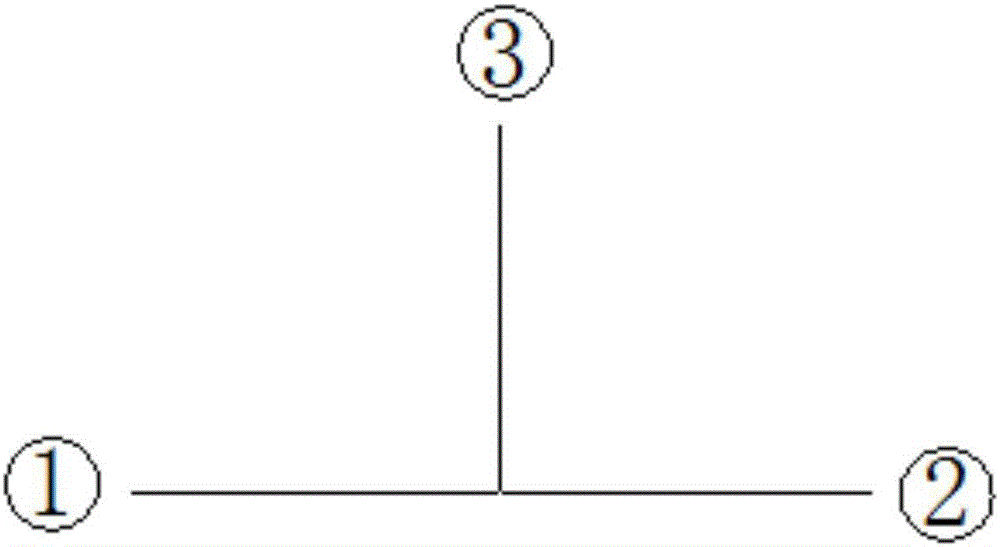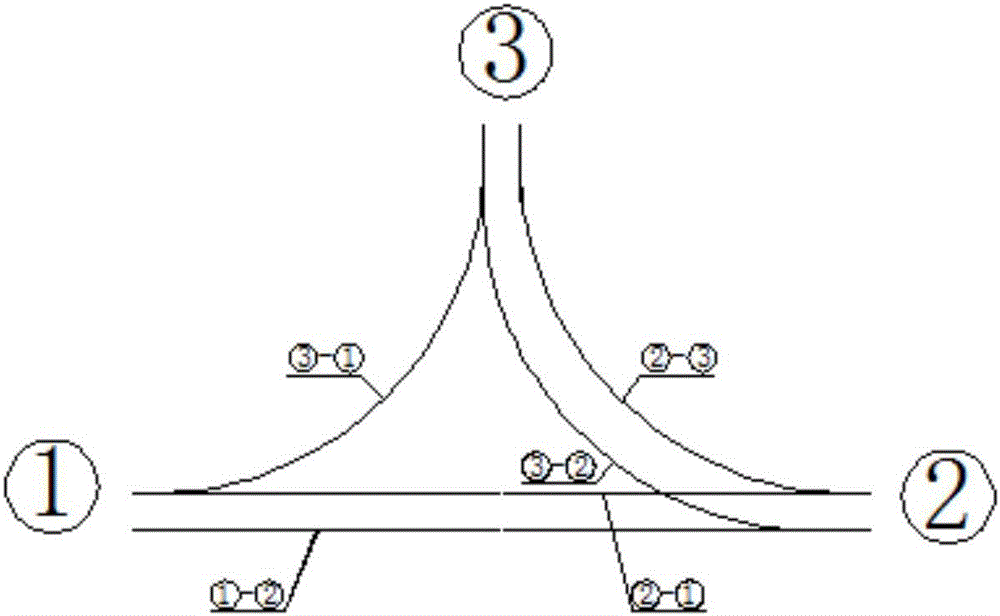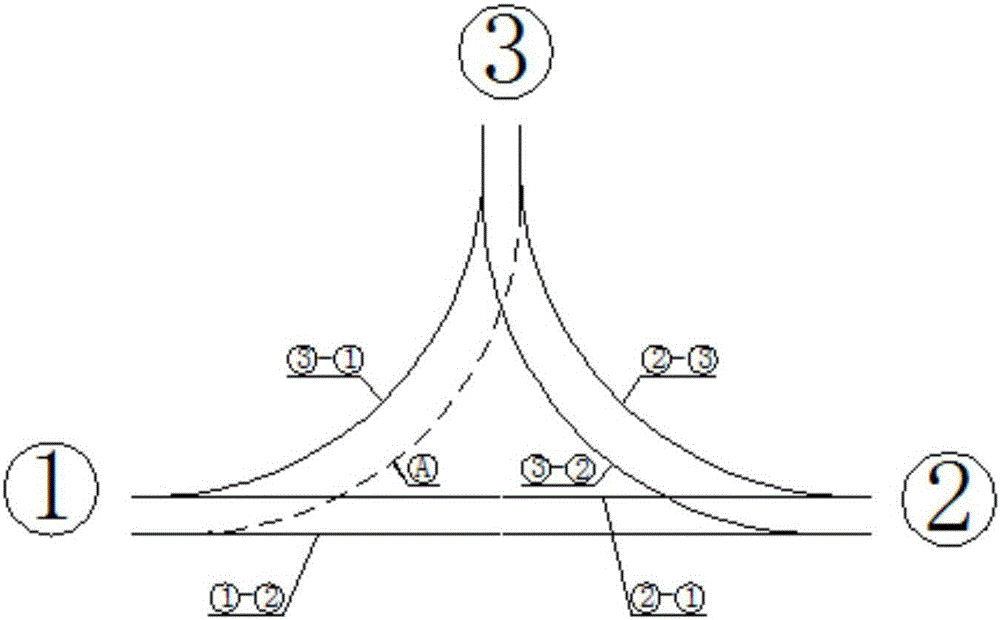Design method for adding ramps to partial interchange intersection
A technology of interchange and design methods, applied in calculation, special data processing applications, instruments, etc., can solve problems such as demolition and relocation disturbing residents, finding no solution for adding ramps, time-consuming and labor-intensive problems, and achieve the effect of improving efficiency and shortening construction time
- Summary
- Abstract
- Description
- Claims
- Application Information
AI Technical Summary
Problems solved by technology
Method used
Image
Examples
Embodiment 1
[0046] Such as Figure 1 to Figure 4 As shown, take the 3-way interchange where the roads in 3 directions intersect to add ramps ①-③ as an example.
[0047] 1) Number the starting road direction. The roads in three directions intersect, k=3, then the starting points of the roads are numbered as ①, ②, ③ in the counterclockwise direction, such as figure 1 shown.
[0048] 2) Calculate the number of all-interchange ramps where roads in three directions intersect. n=3×(3-1)=6. The number of all-interchange ramps where roads in three directions intersect is 6.
[0049] 3) Number the turning ramps. Number the turning ramps of some existing interchanges, such as image 3 shown. There are 5 ramps in some existing interchanges, n 0 = 5, such as figure 2 shown.
[0050] 4) Calculate the number of ramps that need to be added to rebuild a partial interchange where roads in three directions intersect into a full interchange. Δn=n-n 0 =6-5=1.
[0051] This part of the interchang...
Embodiment 2
[0063] Take the addition of ①-④ ramps at the 4-way interchange where roads in 4 directions intersect as an example.
[0064] 1) Number the starting road direction. The roads in 4 directions intersect, k=4, then the starting points of the roads are numbered as ①, ②, ③, ④ in the counterclockwise direction, such as Figure 5 shown.
[0065] 2) Calculate the number of all-interchange ramps where roads in four directions intersect. n=4×(4-1)=12. The number of all-interchange ramps where roads in four directions intersect is 12.
[0066] 3) Number the turning ramps. Number the turning ramps of some existing interchanges, such as Figure 6 shown. There are 11 ramps in some existing interchanges.
[0067] 4) Calculate the number of ramps that need to be added to transform the partial interchanges where the roads in four directions intersect into full interchanges. Δn=n-n 0 =12-11=1.
[0068] This part of the interchange lacks one ramp: ①-④ ramp.
[0069] 5) Calculate the max...
Embodiment 3
[0080] Take the addition of ①-⑤ ramps at the 5-way interchange where roads in 5 directions intersect as an example.
[0081] 1) Number the starting road direction. The roads in 5 directions intersect, k=5, then the starting points of the roads are numbered as ①, ②, ③, ④, ⑤ in the counterclockwise direction, such as Figure 10 shown.
[0082] 2) Calculate the number of all-interchange ramps where roads in four directions intersect. n=5×(5-1)=20. The number of all-interchange ramps where roads in five directions intersect is 20.
[0083] 3) Number the turning ramps. Number the turning ramps of some existing interchanges, such as Figure 11 shown. There are 19 ramps in some existing interchanges, n 0 =19.
[0084] 4) Calculate the number of ramps that need to be added to transform the partial interchanges where the roads in four directions intersect into full interchanges. Δn=n-n 0 =20-19=1.
[0085] This part of the interchange lacks 1 ramp: ①-⑤ ramp.
[0086] 5) Calc...
PUM
 Login to View More
Login to View More Abstract
Description
Claims
Application Information
 Login to View More
Login to View More - R&D
- Intellectual Property
- Life Sciences
- Materials
- Tech Scout
- Unparalleled Data Quality
- Higher Quality Content
- 60% Fewer Hallucinations
Browse by: Latest US Patents, China's latest patents, Technical Efficacy Thesaurus, Application Domain, Technology Topic, Popular Technical Reports.
© 2025 PatSnap. All rights reserved.Legal|Privacy policy|Modern Slavery Act Transparency Statement|Sitemap|About US| Contact US: help@patsnap.com



